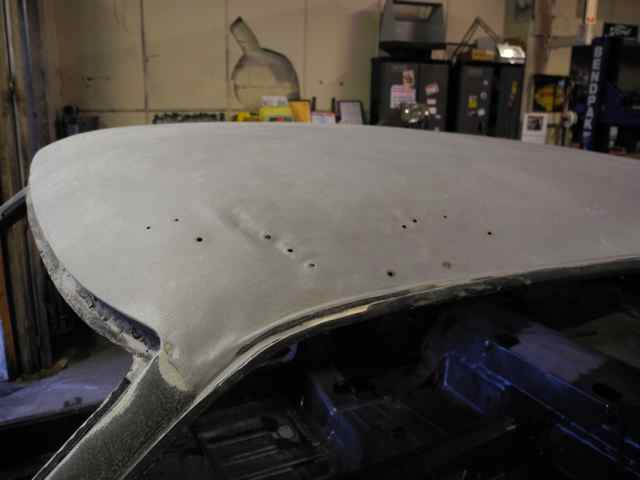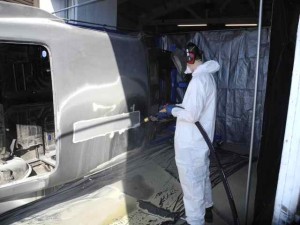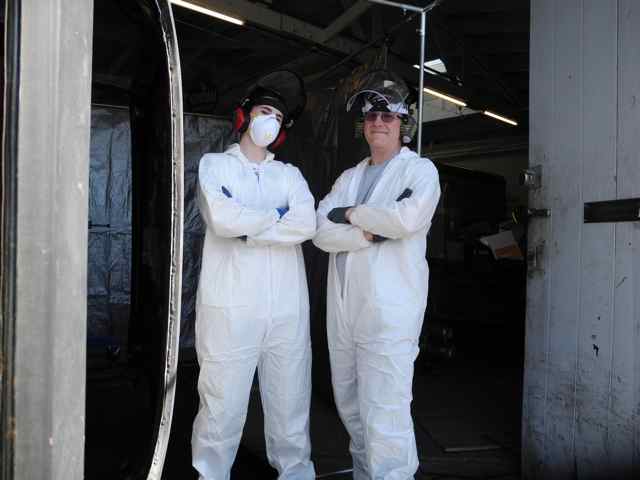BADDA BING BADDA BOOM
And just like that, we’re on the other side of the restoration. No more disassembly, no more removal, no more stripping; now, we’re putting Humpty Dumpty back together again.
On Friday, Dad and I erected a small structure of aluminum poles in the garage, 20ft x 10ft x 8ft in all. While I was working out on Saturday morning, Dad picked up a heavy-duty air compressor and all the necessary safety equipment we would need for the day ahead. We met up at the garage, draped our containment structure with tarps, and hooked up the blaster to the compressor. We donned our Tyvek coveralls, breathing masks, face shields, and earmuffs. Then we began to blast.
The ground glass that the DB150 uses cuts through primer and rust surprisingly fast, which made the stripping process fairly quick: in all, we did the entire car in only 3 hours over two days. The part that slowed us down, however, was the immense amount of body filler on the roof, which took a lot longer to blast through. In places, there was Bondo laid 1/2 inch thick. Beneath these spots we found holes poked through rippled sheet metal, evidence of a cheap repair job (we’ll clean these up later with a hammer and dolly, and hopefully do a much better job at applying the filler). Another factor that slowed us down was the face shields—every time one of us accidentally blasted into a pocket or depression, the media would shoot right back at us and cover our shields, which needed periodic cleaning.
Aside from the roof, we also cleaned up the entire underside, both rear quarter panels, the cowl, and parts of the engine compartment and inner wheel wells. Preparation and clean up took far more time and effort than the actual blasting. After the first day, we found that the entire garage had been dusted with a light layer of glass, so on the second day we added an overhead cover to our blast booth. Even then, all of the glass left a complete mess. The drop-clothes that we laid down caught a lot of it, but were so heavy when we rolled them up that they needed to be put on a dolly to be transferred to the dumpster. After much hosing and sweeping, we finally cleaned the garage, sidewalk, rotisserie, and booth materials (the face shields we consigned to the trash).
Getting glass off of the car was much harder, so we’re letting it dry before we try to vacuum it out. Then we’ll apply a rust inhibitor to all of the exposed sheet metal and get ready to start body work.


 Feed Validator
Feed Validator